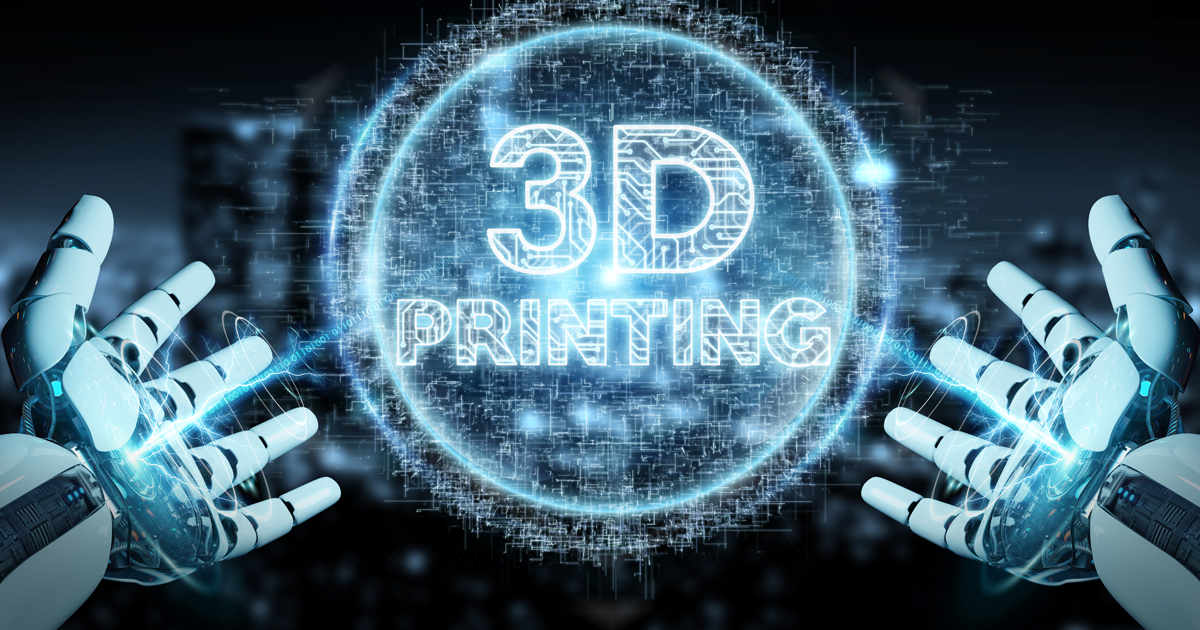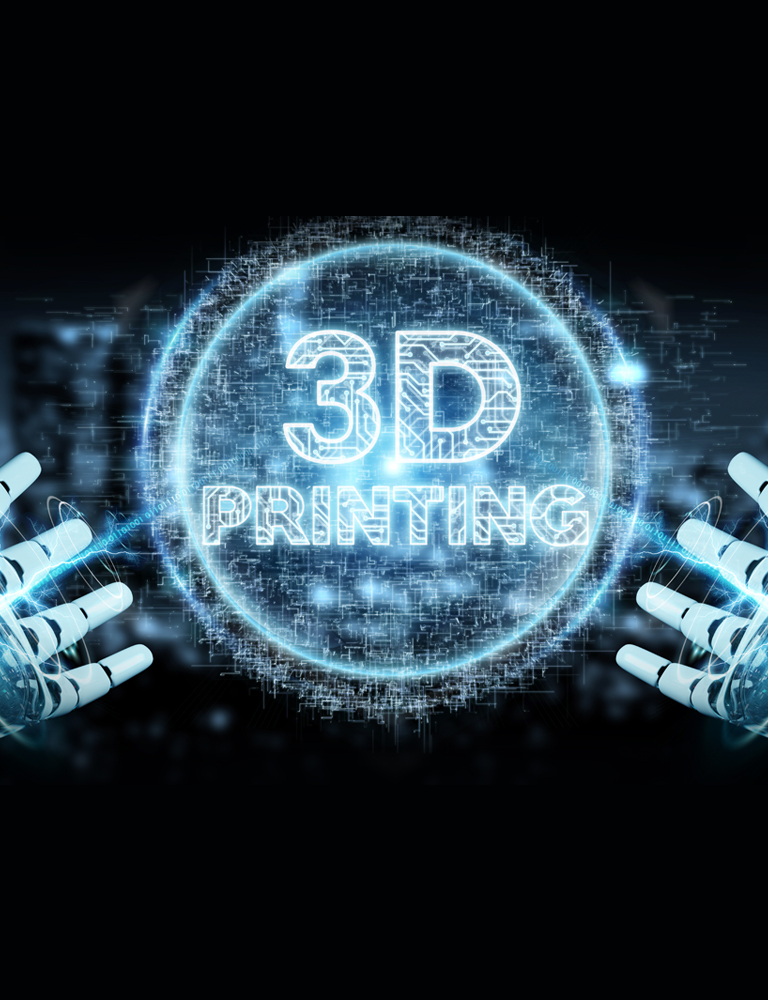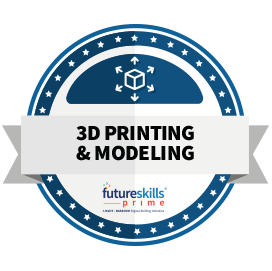Course Provider

What will you learn in Fundamentals of Additive Manufacturing Using 3D Printing course?
- The course begins with a comprehensive introduction to the fundamental principles and concepts of 3D printing technology.
- Students will learn about the various types of 3D printers, their components, and the different materials used in the process.
- Understanding the characteristics of different materials used in 3D printing is essential for achieving desired results.
- In this course, students will explore a wide range of materials available for 3D printing, such as plastics, metals, ceramics, and composites.
Fundamentals of Additive Manufacturing Using 3D Printing
-
 Skill Type
Emerging Tech
Skill Type
Emerging Tech -
 Domain
3D Printing & Modeling
Domain
3D Printing & Modeling -
 Course Category
Deepskilling Course
Course Category
Deepskilling Course -
 Placement Assistance
Yes
Placement Assistance
Yes -
 Certificate Earned Joint Co-Branded Participation Certificate & Partner Completion certificate
Certificate Earned Joint Co-Branded Participation Certificate & Partner Completion certificate -
 Nasscom Assessment Coming Soon
Nasscom Assessment Coming Soon -
 Course Covered under GoI Incentive
Yes
Course Covered under GoI Incentive
Yes -
-
 Course Price
₹ 9,900₹ 6,930till 31th October, 2023
Course Price
₹ 9,900₹ 6,930till 31th October, 2023 -
 Course Duration
40 hours
Course Duration
40 hours
-
Why should take Fundamentals of Additive Manufacturing Using 3D Printing course?
- Innovation and Creativity: This course allows you to turn your ideas into tangible objects. Learning this technology expands your creative horizons and enables you to bring unique concepts to life.
- Career Advancement: 3D printing is rapidly transforming industries such as manufacturing, healthcare, architecture, and fashion. Acquiring skills in this field positions you for high-demand job roles and enhances your employability.
- Cost and Time Efficiency: With 3D printing, you can create prototypes and functional parts in a fraction of the time and cost compared to traditional manufacturing methods. This knowledge is valuable for entrepreneurs, designers, and engineers seeking efficient production processes.
- Customization and Personalization: 3D printing empowers you to customize products and create personalized items. Whether it's designing jewelry, fashion accessories, or prosthetics, you can cater to individual preferences and unique requirements.
- Educational and STEM Opportunities: 3D printing stimulates curiosity and fosters a deeper understanding of science, technology, engineering, and mathematics (STEM) concepts. It serves as a hands-on educational tool for students and promotes critical thinking and problem-solving skills.
- Entrepreneurial Ventures: 3D printing enables you to start your own business or venture into freelance work. With the ability to design and manufacture custom products, you can tap into niche markets and explore entrepreneurial opportunities.
- In summary, a 3D printing course equips you with valuable skills, expands your career prospects, fosters innovation, and allows you to make a meaningful impact in various industries. Embrace this transformative technology and unleash your creative potential.
Who should take Fundamentals of Additive Manufacturing Using 3D Printing course?
The course is available for professionals and graduates with basic knowledge of Computer Aided Drafting and a good understanding of desigining concepts.
Curriculum:
- Introduction of 3D Printing
- Visual
- Printing
- Scanning/Reverse engineeringFunctions of various parts
- Evolution of 3D Printing
- What is Additive Manufacturing?
- General procedure of 3D Printing
- 3D CAD File formats
- Stereo lithography files
- Various Printing technologies (SLA, SLS, FDM, Poly jet Printing, Color jet Printing, SHS, SLM,
- LOM, Multi jet Printing, DLP
- FDM in detail
- Preparation of print ready file using Plasto 200
- Introduction
- Architecture
- Functions of various parts
- Materials used
- Accuracy
- Advantages
- Limitations
- Operating Plasto 200 - Live demonstration
- Problem Definition
- Procedure
- Output
- Review and Suggestions
- STL principles
- How to identify bad spots of STL?
- How to fix bad spots of STL?
- Object Placement
- Placing the component
- Duplication of components
- Orientation of components
- Object Analysis
- Slicer Settings
- Print Settings
- Layers and Perimeters
- Infill
- Speed
- Skirt and brim
- Creation of Supports
- Filament settings
- Printer settings
- Material Properties
- Manual Controls
Tools you will learn in Fundamentals of Additive Manufacturing Using 3D Printing course:
- Additive Manufacturing
- Fusion Deposition Modeling
- Filament Materials
- 3D CAD File Formats
- Repetier Host Interface
- Part Orientation
- Slicing, Finishing and Boning
- STL Model
- Projects
FAQs
3D printing can utilize a wide range of materials, including plastics (such as PLA and ABS), resins, metals (such as titanium and aluminum), ceramics, and even food-grade materials like chocolate and sugar.
The time required for 3D printing depends on various factors such as the size, complexity, and desired level of detail of the object. Small and simple objects may take a few hours, while larger and more intricate designs can take several days or even weeks.
While 3D printing has many advantages, it also has some limitations. These include limitations in terms of size (print bed limitations), speed (printing can be time-consuming), material properties (strength and durability may vary), and the need for post-processing (removing support structures, surface finishing, etc.) to achieve the desired final result. Additionally, certain intricate designs may require advanced skills or specialized equipment.



